How to refine calculation settings
GPS data calculations can be refined in Prism using client settings. Client Settings are controls that allow you to specify how Prism operates in various ways. FTC Report Delivery settings let you specify who should receive emailed monthly reports.
Trip Split Threshold settings let you control how Prism defines vehicle trips that are used to compile your fuel apportionment results. For example, you can limit the amount of idling allowed at the start or end of trips.
Trip Inclusion Threshold settings let you control which trips Prism includes the fuel apportionment results. For example, you can include only trips with a minimum amount of recorded distance.
Each telematics system may be different in terms of how trips are defined and the data that is provided to Prism. These controls are intended to ensure that the data used to generate your fuel apportionment meets any criteria that you have specified, or that you may agree with your tax advisor or the ATO, with regards to accurately representing your fleet activity.
Determination of these settings is your responsibility, though our team is always ready to assist where possible.
How to Change the Client Settings
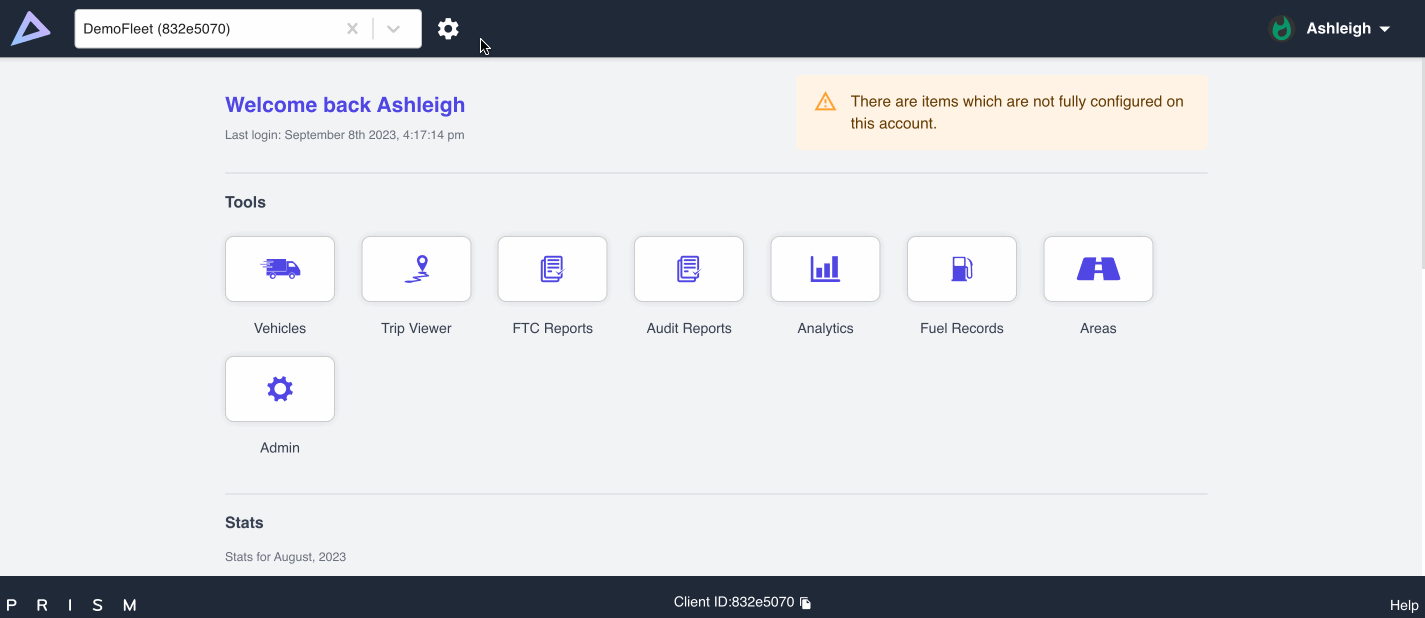
Demonstration of how to change the client settings
Following the demonstration shown above, please also refer to the steps below on how to change the client settings:
Click on the gear button (next to the search bar on the top-left).
This will take you to the Client Settings page.

Under Client Settings, scroll down until you see Trip Split Threshold Settings.
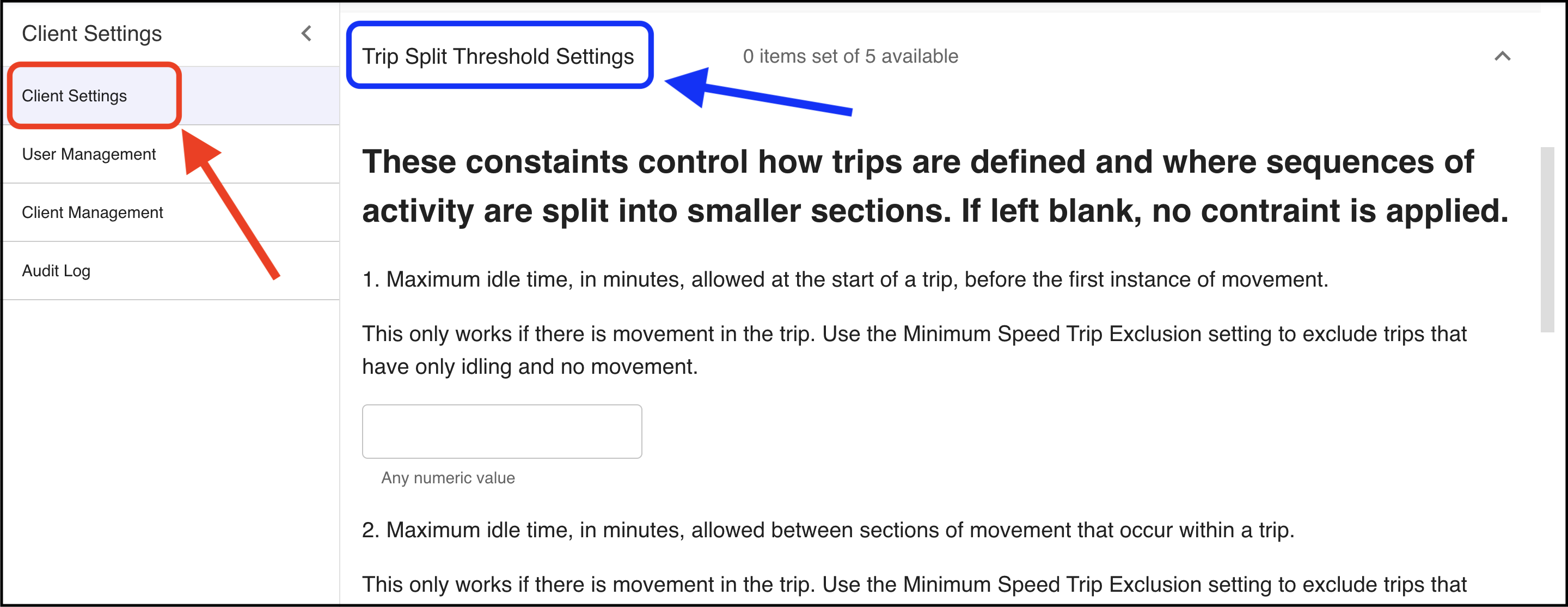
Go to 3. Maximum idle time, in minutes, allowed at the end of a trip, after the last instance of movement.
From there, you’ll need to enter the setting value for each item you choose to enable in the box.

Click the Save button to apply your changes.
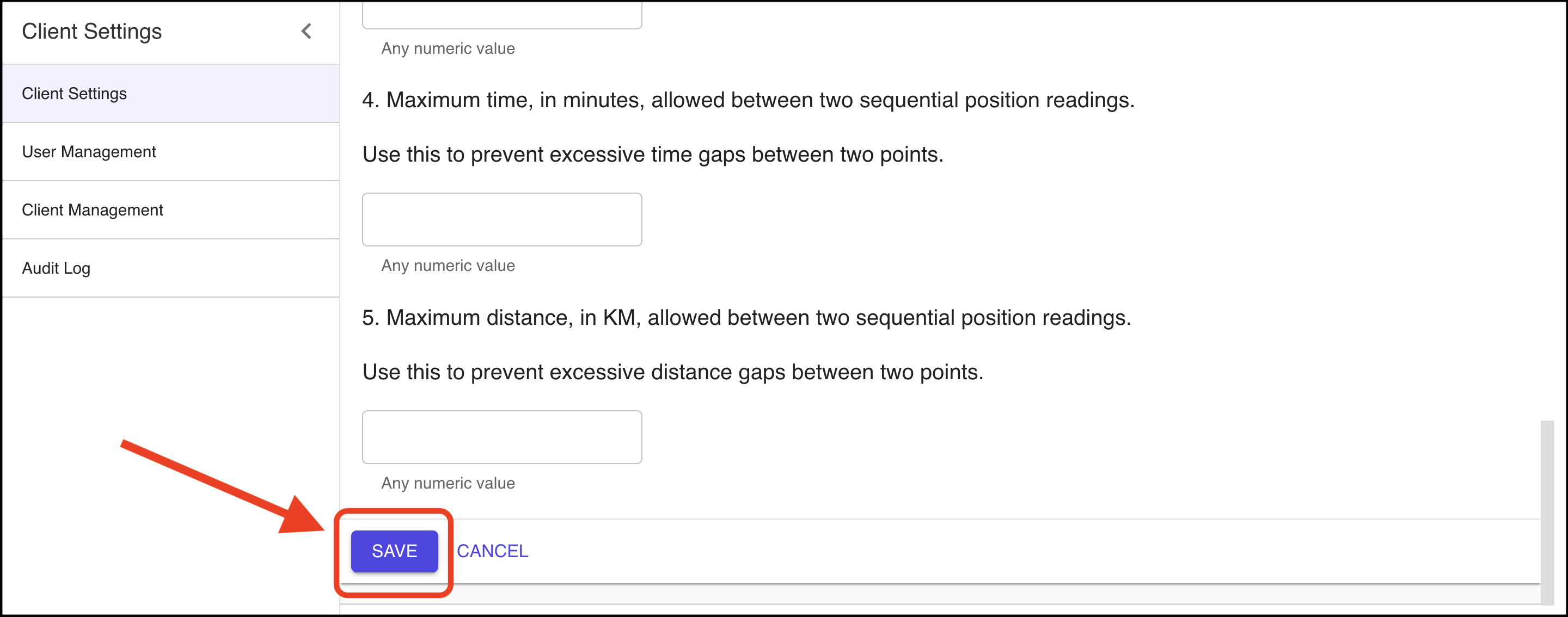
Explanation of Trip Split Threshold Settings
Maximum idle time, in minutes, allowed at the start of a trip before the first instance of movement.
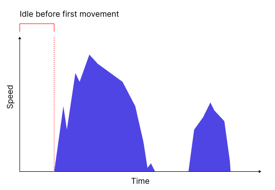
Sets the maximum time that a vehicle can idle at the start of a trip. If the idling in this period exceeds this value, the points at the start are discarded until the idle period is within the threshold.
This can assist with avoiding excessive idling where there is faulty ignition sensor data.
2. Maximum idle time, in minutes, allowed between sections of the movement that occur within a trip.
Sets the maximum time that a vehicle can idle between periods of movement within a trip. If any period exceeds the threshold, the trip is split into smaller trips that meet the threshold.
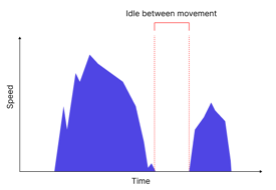
This can assist with avoiding excessive idling where there is faulty ignition sensor data.
3. Maximum idle time, in minutes, allowed at the start of a trip after the last instance of movement.
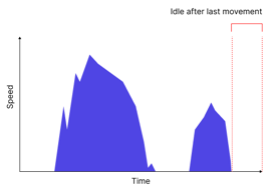
Sets the maximum time that a vehicle can idle at the end of a trip, after the last movement. If the idling in this period exceeds this value, the points at the end are discarded until the idle period is within the threshold.
This can assist with avoiding excessive idling where there is faulty ignition sensor data.
4. Maximum time, in minutes, allowed between two sequential position readings.
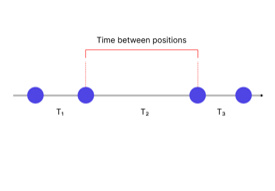
Sets the maximum time allowed between two position readings. If the time between two positions exceeds this threshold, the trip is split into two smaller trips at that point and the time between the points is considered as ignition off.
This can assist with avoiding incorrect trip identification by telematics systems leading to the excessive movement being calculated.
5. Maximum distance, in KM, allowed between two sequential position readings.

Sets the maximum distance allowed between two position readings. If the time between two positions exceeds this threshold, the trip is split into two smaller trips at that point and the time between the points is considered as ignition off.
This can assist with avoiding incorrect trip identification by telematics systems leading to the excessive movement being calculated.
Explanation of Trip Inclusion Threshold Settings
Maximum total idle time, in minutes, allowed during a trip to include it.
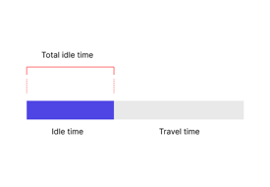
Sets the maximum amount of time that a vehicle can idle in total across the whole trip to be included. Trips that exceed this value remain in the database and are flagged as excluded so they are not used in the fuel apportionment calculations.
This can assist with avoiding trips with excessive idling due to data quality issues or faulty sensors.
2. Maximum idle time, as a percentage of total time, allowed during a trip to include it.

Sets the maximum proportion of time relative to the total trip time for a trip to be included. Trips that exceed this value remain in the database and are flagged as excluded so they are not used in the fuel apportionment calculations.
This can assist with avoiding anomalous trips caused by data quality issues or faulty sensors.
3. Minimum total time (idle plus travel), in minutes, required during a trip to include it.
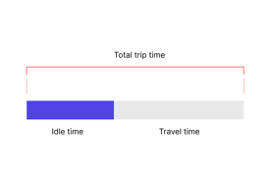
Sets the minimum amount of time across all activity in a trip for it to be included. Trips that exceed this value remain in the database and are flagged as excluded so they are not used in the fuel apportionment calculations.
This can assist with avoiding trips with excessive activity records due to data quality issues or faulty sensors.
4. Minimum total distance, in KM, required during a trip to include it.
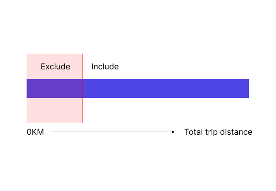
Sets the minimum amount of distance covered in a trip for it to be included. Trips that exceed this value remain in the database and are flagged as excluded so they are not used in the fuel apportionment calculations.
This can assist with avoiding trips with excessive activity records due to data quality issues or faulty sensors.
4. Maximum speed recorded during a trip, in KM/H, to include it
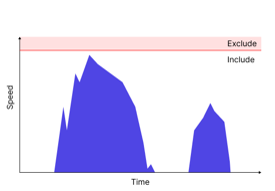
Sets the maximum speed that is allowed to be recorded in a trip for it to be included. Trips that exceed this value remain in the database and are flagged as excluded so they are not used in the fuel apportionment calculations.
This can assist with avoiding unrealistic movement profiles caused by data quality issues or faulty sensors.
6. Minimum speed recorded during a trip, in KM/H, to include it.
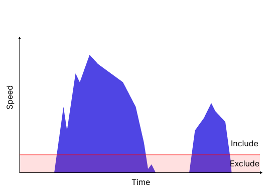
Sets the minimum speed that must be recorded in a trip for it to be included. Trips that exceed this value remain in the database and are flagged as excluded so they are not used in the fuel apportionment calculations.
This can assist with avoiding idle-only trips (trips with no movement recorded) if desired.
